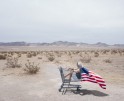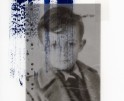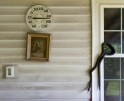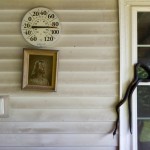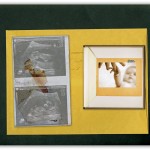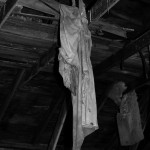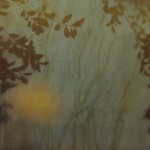Guillaume Tomasi: A bloom in the eye of the storm
This week we are looking at the work of artists who submitted projects during our most recent call-for-entries. Today, Guillaume Tomasi and I discuss A bloom in the eye of the storm.
Guillaume (b. 1984, France ) is a photographer and curator based in Montreal. He received his BFA in Photography from Concordia University in 2020 and in 2016 he created the collaborative project Fiiiirst, which still features anonymous image based discussions between photographers. His work has been exhibited in Russia, the United States, England, Switzerland, Canada and Italy. In 2020, he published his first photo book Chrysalises, which has been featured in numerous international publications such as The Heavy Collective, Fisheye Magazine, AIN’T BAD, Fotoroom, Der Greif, Urbanautica and GUP Magazine.
Follow Guillaume Tomasi on Instagram: @guitouxx
A bloom in the eye of the storm
How do we grow up in a society that constantly reminds us that our way of life is leading us inexorably to our loss? Through the gaze of a father towards his children, A bloom in the eye of the storm focuses on the inner conflict they unconsciously experience as they try to develop their identity in a society that is slowly dying. By directing the camera into the intimacy of my family, I photograph the world that I try, like any parent, to keep peaceful and caring for my children. However, while we continue to blindly enjoy our daily routines, the climate changes we are facing are darkening this harmony like a threatening storm.
Daniel George: Tell us more about how A bloom in the eye of the storm began. Of course, you mention that it is based on your experiences as a father, but at what point did you determine to make it visual?
Guillaume Tomasi: This project was not immediately obvious. I immigrated to Canada in 2010, and I often go back to France to see my family and find the places where I grew up. Coming back there with my children is a privilege. Being able to show them this part of my history was also important to me.
During these trips, I especially thought about what it was like to grow up in the 80s. In France, the ecological concerns were not as present as they are today, and even less so in the countryside. There was a certain carelessness about tomorrow. We had a lot of dreams and everything seemed possible. Then, when I came back to Montreal, I started to wonder about my children’s childhood in the city. They are happy and enjoying it, but something had shifted in me.
The overwhelming messages about the health of the planet, the testimonies of people affected, the repeated natural disasters, etc… have created a latent anxiety that was just waiting to explode. They are not aware of it even if they know the good gestures to adopt for the planet, but the big picture of the problem is not yet a reality for them. That’s when I felt the urge to explore this feeling and turn it into an artistic project. I think I needed to embrace that anxiety and charge it with creative energy.
DG: In your biography, you write that you are “sensitive to the small details of the everyday.” What do you think brought your responsiveness to the quotidian? And what keeps this a core interest in your photographic work?
GT: This appeal to small details or simple things comes from the fact that I am very interested in objects and the stories they can tell. It is said that we do not own objects, but they own us. You can easily learn a lot about a person by taking a picture of their night stand rather than the most accurate portrait.
I think I need to create stories with my photos, like little scenes with multiple interpretations. I rarely take portraits and I don’t like to stage my photos, or direct my subjects. I prefer to emphasize the presence of the human by its absence. This can result in scenes of a confusing banality, but where I try to make it interesting (I hope) is by the point of view chosen. Being quite sensitive by nature, I try to infuse this sensitivity into my photos by the perspective, the composition and what this or that subject can evoke on my audience.
DG: As a parent myself, I am drawn to artists who are able to direct our attention into the intimacy of a family. It can certainly be a balancing act of many wills and personalities. Could you talk about how you navigate the collaborative aspect of this project?
GT: When I started this work, my children were 1 and 5 years old. Clearly not the easiest age to photograph them. Even though they are older now, the collaborative aspect of this project is still quite low. Since I prioritize my role as a father over my photographic practice, the moments when I return to my posture as a photographer are not frequent. Generally, I photograph them without interfering, sometimes without them seeing me. I try to capture that sincerity in their eyes, that introspective look they can have sometimes.
It’s not easy to find your place as a parent and an artist. There is always a risk of producing “family” photos where we see that they are your children, whereas the goal is to make photos that represent a child, without direct filiation. Of course, I always show them what I do, the contact sheets, the prints etc… so that they are aware of it and tell me if they don’t like it. The photos that don’t pass the cut, are mostly found in a family album where it makes beautiful memories.
DG: I’m curious about your photographs of various spaces, and how this relates to this idea keeping the world “peaceful and caring” for your children. Would you explain how you feel you are able to do this with your camera?
GT: It’s easier to write than to do. For this project, the children’s world is represented by photos of nature magnified: vast calm landscapes, a body of water reflecting the clouds or flowers shining in the sun near a house, etc… This creates a kind of safe bubble where they grow up gently. However, this peaceful world does not last throughout the project.
This harmony is threatened and the “bubble” cracks significantly when confronted with disruptive elements. I am currently working on a photo book and I am essentially reflecting on this caring environment that slips from our hands little by little. It’s interesting that you ask this question because the photos mentioned above have a smaller part in the project to leave room for a growing tension.
DG: You begin your artist statement with a question that brings to mind the abundance of social and environmental conflicts that could (and do) create a strong sense of anxiety for those currently raising children. How would you say that photography (or the arts in general) offer solace (or even a solution) to the issues that we are all facing?
GT: Wow, it’s a big one! A relief, yes, because they allow us to forget, to take a break. Sometimes they bring us meaning on a particular subject. We are so anchored to our problems that it is liberating to be able to see the world differently through arts.
Photography in my case is a solitary activity. It’s a time when I decide to take time to look at the world around me. It is a special feeling because the frustrations, the worries disappear as soon as my eye is attracted to a scene, an object, a face or a sensation. It’s really during the editing process that the context is slowly added to the pictures. The relief for me comes during the process and diminishes during the editing.
Whether it’s in a museum, in a movie theater, or between the pages of a book, all of these mediums provide a break in our daily lives. When you come out of a movie, after discussing the film with friends, and go to your home, it is at this point in the latent moments, that reality strikes again and the daily stress returns.
Posts on Lenscratch may not be reproduced without the permission of the Lenscratch staff and the photographer.
Recommended
-
Martin Stranka: All My StrangersDecember 14th, 2025
-
Interview with Maja Daniels: Gertrud, Natural Phenomena, and Alternative TimelinesNovember 16th, 2025
-
MG Vander Elst: SilencesOctober 21st, 2025
-
Photography Educator: Josh BirnbaumOctober 10th, 2025
-
Aiko Wakao Austin: What we inheritOctober 9th, 2025



















